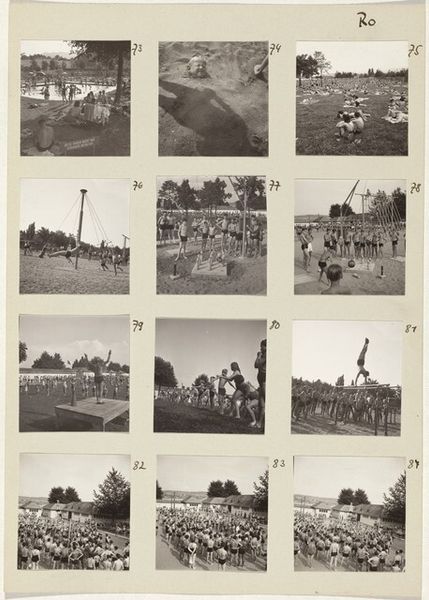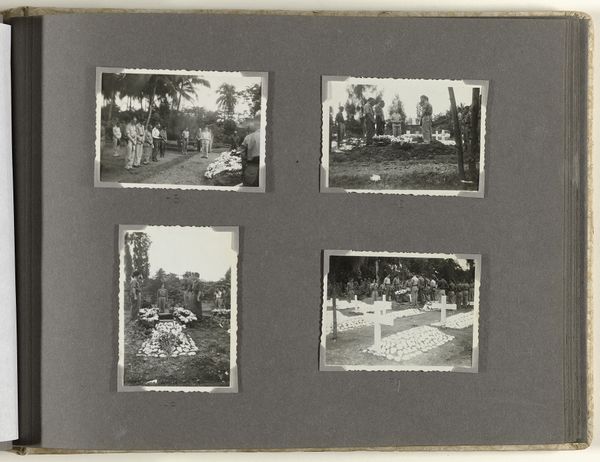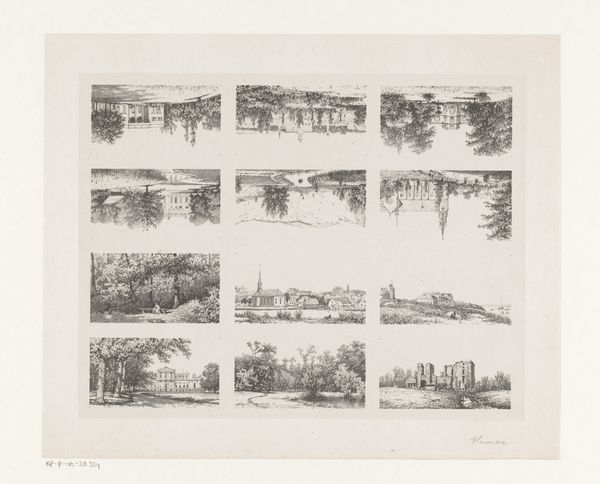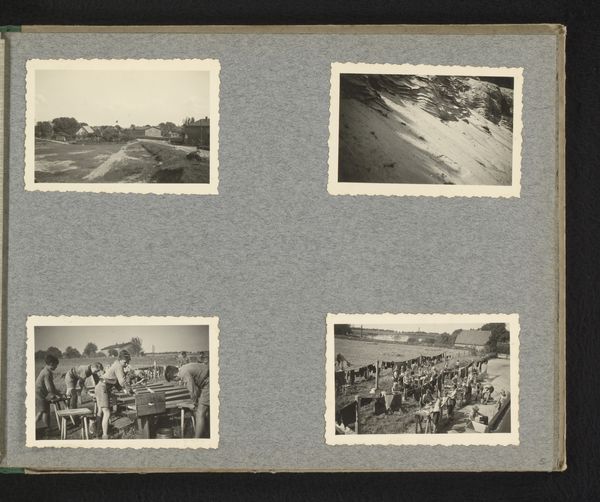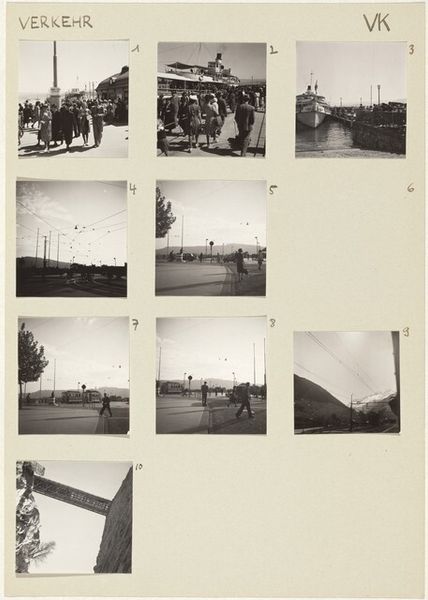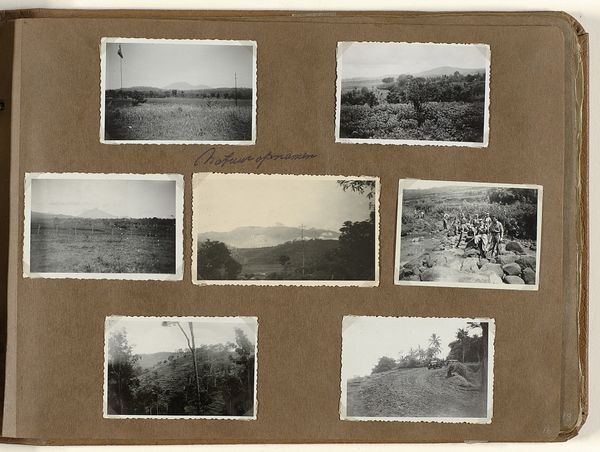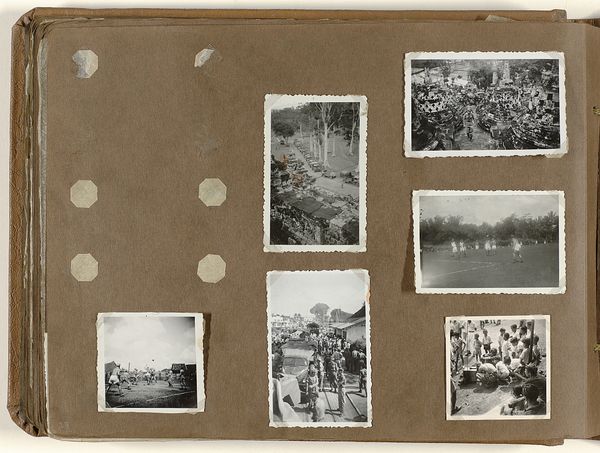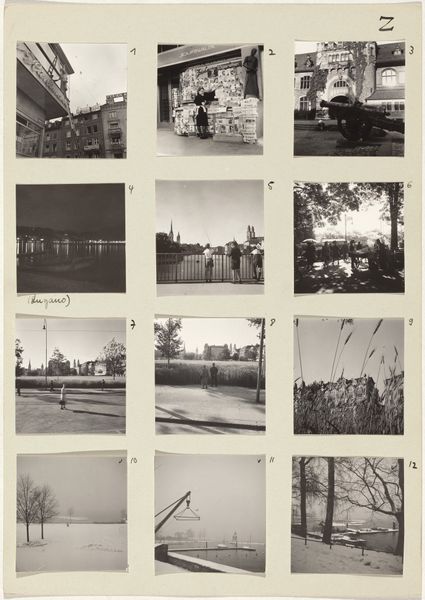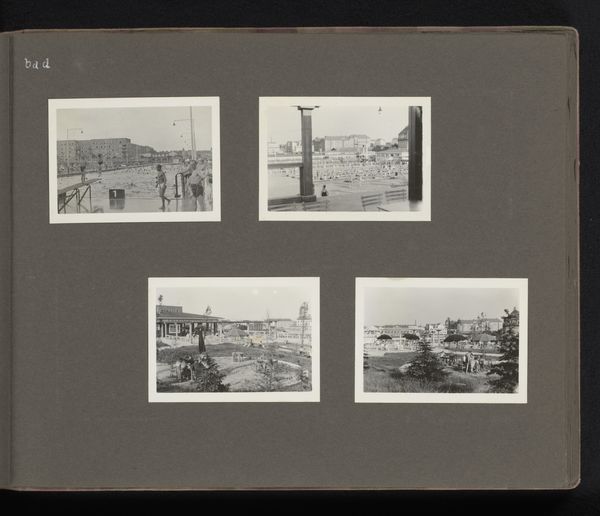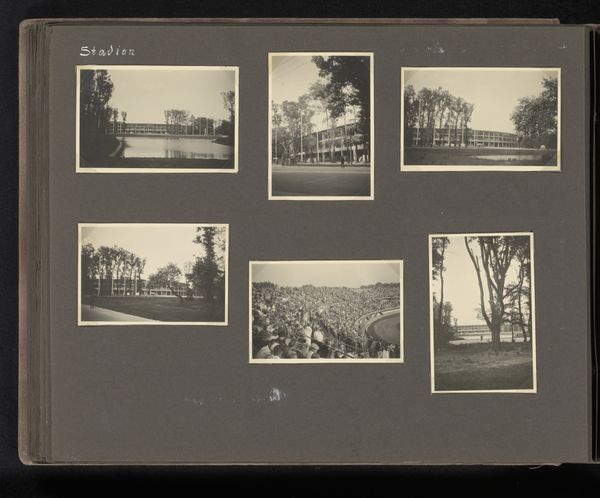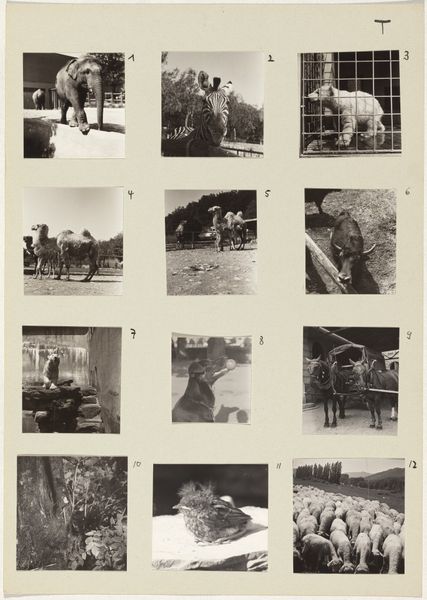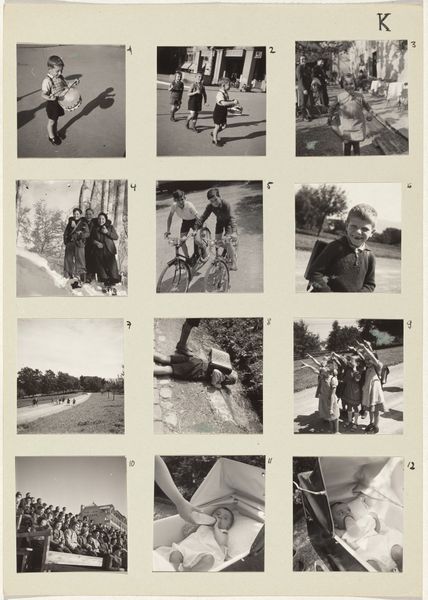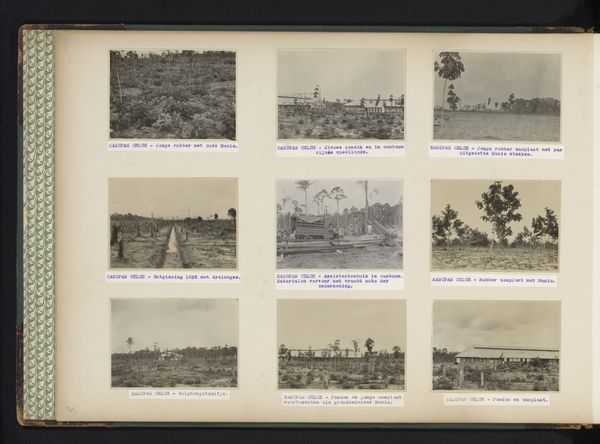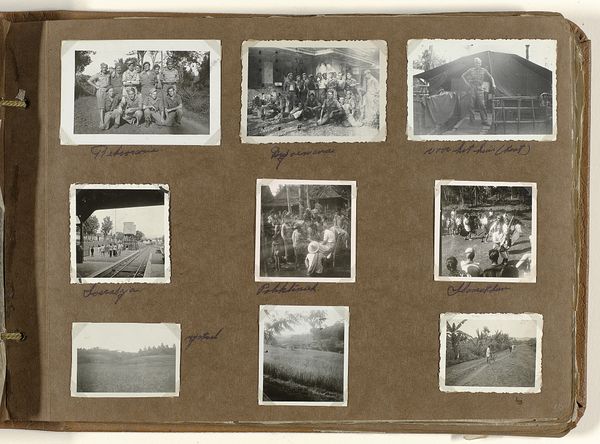
Dimensions: sheet: 29.6 x 21 cm (11 5/8 x 8 1/4 in.)
Copyright: National Gallery of Art: CC0 1.0
Editor: This is Robert Frank's "Die Reportage (Reportage) 61-72", a gelatin-silver print made between 1942 and 1946. It's a collection of twelve photographs, almost like a contact sheet, depicting people in various outdoor recreational activities. Some are swimming, others sunbathing or showering... it's a little slice of life. I’m struck by how ordinary the images are, considering when they were taken. What can you tell me about it? Curator: The ordinary, as you say, is precisely where we begin. Note the repetition of figures in water, under showers – ritualistic cleansing or communal experience? Even the first image, a collection of what appears to be seeds and text in German, carries symbolic weight. Is it about nourishment, health, the promise of the land? The repeated image or shared experiences – street photography like this captures fleeting moments of cultural memory. How do these repeated images affect you? Editor: I suppose they create a sense of universality, like these could be images from almost any time, but then the historical context seeps in and makes you question that feeling. Were people finding normalcy despite everything going on? Curator: Precisely! Consider this work as a reflection on survival, resistance, or maybe a silent lament. The symbol, as always, depends on the context given. Frank offers glimpses, allowing our own cultural memory to fill the voids, completing his visual story. What larger narratives come to mind when you view it? Editor: Thinking about it that way, it definitely shifts my perspective. I’d initially viewed it as a straightforward document, but I now recognize the layers of meaning he might be trying to convey about finding normalcy in extraordinary times, especially considering the shadow of that time period. Curator: Exactly! The layering of cultural memory allows new audiences to engage and develop an expanded image that changes across the eras, offering new insights. Thank you for your time, this was greatly illuminating.
Comments
No comments
Be the first to comment and join the conversation on the ultimate creative platform.
